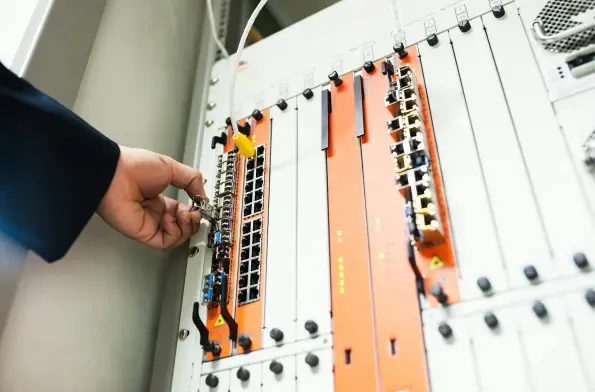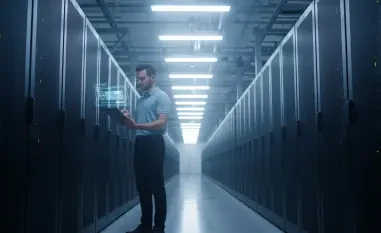Beneath the vast expanse of the Atlantic and surrounding seas lies a network of subsea telecommunication cables that form the backbone of the United Kingdom’s digital existence, carrying roughly 99% of the nation’s data and underpinning its Critical National Infrastructure (CNI). These underwater conduits are indispensable, facilitating everything from financial transactions to essential government services, yet they remain largely out of sight and, alarmingly, out of mind when it comes to robust security measures. As geopolitical tensions simmer and hybrid warfare tactics evolve, the vulnerability of these cables has emerged as a pressing concern for national security. A recent inquiry by the Joint Committee on the National Security Strategy (JCNSS), initiated in February of this year, has laid bare significant weaknesses in the UK’s defenses against potential disruptions. The findings paint a stark picture: a single act of sabotage could plunge critical sectors into chaos within hours, threatening economic stability and communication networks. This critical issue demands urgent scrutiny as the risks grow ever more tangible in an increasingly unstable world.
Unveiling the Vulnerabilities
Escalating Geopolitical Threats
The landscape of global security has shifted dramatically, casting subsea cables as prime targets in an era defined by hybrid warfare and geopolitical instability. The JCNSS inquiry underscores that deteriorating international relations have heightened the likelihood of critical infrastructure being weaponized during conflicts or crises. These cables, often unseen and unprotected, represent a strategic vulnerability that adversaries could exploit to disrupt the UK’s connectivity and sow widespread disorder. Beyond mere inconvenience, such disruptions could cripple sectors like finance, where split-second data transfers are vital, and hinder emergency response systems reliant on seamless communication. The inquiry warns that the potential for deliberate sabotage, especially during periods of heightened tension, is no longer a distant hypothesis but a plausible threat requiring immediate attention. As state and non-state actors refine covert tactics, the need to prioritize cable security becomes paramount to safeguarding national interests against unseen but devastating attacks.
Another dimension of this escalating threat lies in the nature of modern warfare, where physical damage to infrastructure can be paired with cyber operations for maximum impact. The JCNSS highlights concerns over coordinated attacks that could sever multiple cables simultaneously, overwhelming the UK’s capacity to respond effectively. Unlike isolated incidents, such multi-pronged assaults could exploit the concentration of data in high-capacity lines, amplifying the fallout across interconnected systems. The government’s National Risk Register (NRR) for the current year outlines a chilling “reasonable worst-case scenario” where transatlantic cables are lost within hours, leading to internet outages and breakdowns in critical services. This scenario is not just a theoretical exercise; it reflects the real possibility of adversaries targeting these lifelines to destabilize the nation. Addressing this complex threat demands a shift in mindset, moving beyond traditional defense strategies to encompass the unique challenges posed by underwater infrastructure.
Physical and Operational Weak Points
Subsea cables face an array of physical vulnerabilities that compound their exposure to both accidental and intentional harm. Civilian vessels, such as fishing boats or commercial ships, pose a constant risk of damaging cables, sometimes under the guise of accidents that mask deliberate sabotage. The JCNSS inquiry points out that these incidents can be exploited by hostile actors seeking to evade accountability through “implausible deniability.” Additionally, onshore infrastructure, including landing stations and data centers, emerges as a soft target where even low-tech attacks could trigger significant disruptions. These weak points create a system with multiple potential failure modes, each capable of unraveling the UK’s digital fabric. The strategic importance of outlying islands and military cables further heightens the stakes, as their isolation and critical role make them particularly attractive targets for adversaries looking to inflict maximum damage with minimal effort.
Beyond the physical risks, operational shortcomings exacerbate the fragility of the subsea network. The concentration of critical data in a limited number of high-capacity cables means that a single breach could have disproportionate consequences, undermining the assumption that sheer numbers provide sufficient redundancy. The JCNSS expresses deep concern over uncertainties in data rerouting capabilities, noting that failures in this area could transform a localized incident into a national crisis. Sectors like supply chain management, heavily reliant on uninterrupted connectivity, could grind to a halt, with cascading effects on the broader economy. Moreover, the inquiry critiques the reactive nature of current risk mitigation, which often focuses on minor incidents while neglecting the catastrophic potential of coordinated hostilities. Strengthening operational resilience, through diversified routing and enhanced monitoring, is essential to mitigate these vulnerabilities and ensure the UK is not caught off guard by a sudden, debilitating attack on its underwater lifelines.
Strategies for Enhanced Protection
Revamping Legal and Policy Frameworks
Addressing the security of subsea cables requires a fundamental overhaul of outdated legal structures, some of which date back 140 years and are ill-suited to modern threats. The JCNSS inquiry advocates for updating these frameworks to impose stricter penalties for malicious damage, sending a clear message of deterrence to potential saboteurs. Introducing innovative legal concepts, such as anti-piracy provisions adapted for cable protection, could further strengthen the regulatory environment. These measures aim to close gaps that currently allow hostile actors to operate with impunity under the pretext of accidental interference. By aligning legal tools with the realities of hybrid warfare, the UK can establish a robust deterrent that complements physical and technological defenses, ensuring accountability for actions that threaten national security through damage to critical underwater infrastructure.
Equally important is the need for cohesive policy coordination across government and industry to address the fragmented approach to cable security. The JCNSS recommends the creation of a cross-government unit to harmonize commercial interests with national security imperatives, overcoming the silos that hinder effective response. Such a body would facilitate strategic planning, ensuring that vulnerabilities are identified and mitigated before they can be exploited. This policy shift also involves reassessing risk frameworks to prioritize high-impact, low-likelihood scenarios over routine incidents like fishing mishaps. By fostering a proactive stance, the government can move beyond dismissive attitudes—where catastrophic attack scenarios are labeled as “apocalyptic” and unlikely—to build a defense strategy grounded in the realities of today’s geopolitical climate. This comprehensive policy reform is a critical step toward fortifying the UK’s subsea network against an array of emerging threats.
Technological and Operational Innovations
Technological advancements offer a promising avenue for bolstering the security of subsea cables against both accidental and deliberate damage. The JCNSS proposes the deployment of integrated monitoring and alert systems to provide early warnings of suspicious activity near critical infrastructure. These systems could enable rapid vessel interception, minimizing the window for sabotage. Additionally, enhancing security at onshore sites, such as landing stations, through fortified perimeters and surveillance, addresses a key vulnerability often overlooked in favor of maritime concerns. Diversifying cable routes, both underwater and on land, is another priority to avoid high-value pinch points that adversaries could target for maximum disruption. Such innovations collectively aim to create a more resilient network capable of withstanding the multifaceted threats of the modern security landscape.
Operationally, the JCNSS calls for tangible measures to ensure swift recovery in the event of cable damage. One standout recommendation is the commissioning of a UK-flagged sovereign repair ship, dedicated to rapid response and reducing reliance on foreign assistance during crises. Complementing this, military exercises focused on escorting repair vessels under hostile conditions would prepare forces to safeguard critical operations when tensions escalate. A reservist scheme to train personnel in specialized cable repair skills is also suggested, building a skilled workforce ready to act in emergencies. These operational upgrades, paired with emergency repair plans, aim to minimize downtime and mitigate the cascading effects of disruptions across sectors like finance and communications. By investing in both technology and preparedness, the UK can transform its subsea cable network from a potential liability into a fortified asset.
Forging a Resilient Future
International Collaboration for Collective Defense
In an interconnected world, the security of subsea cables cannot be addressed in isolation, necessitating robust international partnerships to counter transnational threats. The JCNSS emphasizes the importance of collaboration with NATO to enhance data sharing and coordinate collective security measures with allies. Such partnerships would enable law enforcement and military entities to track and respond to suspicious activities across borders, creating a unified front against state or non-state actors targeting critical infrastructure. By pooling resources and intelligence, the UK can leverage global expertise to bolster its defenses, ensuring that vulnerabilities in one region do not undermine the broader network. This cooperative approach is essential in an era where hybrid warfare tactics often exploit jurisdictional gaps, making international solidarity a cornerstone of effective cable protection.
Further deepening this collaborative effort, the UK stands to benefit from joint exercises and shared contingency planning with allied nations. These initiatives could simulate large-scale disruptions, testing the resilience of data rerouting and emergency response mechanisms across multiple countries. The JCNSS notes that incidents like the Estlink 2 submarine power cable outage between Estonia and Finland, which raised suspicions of sabotage, underscore the shared nature of these risks. Learning from such events through international dialogue can inform best practices and refine defensive strategies tailored to the unique challenges of subsea infrastructure. Strengthening these ties also sends a powerful signal to potential adversaries, demonstrating a collective resolve to protect vital digital lifelines. As threats evolve, sustained global cooperation will be indispensable for maintaining the integrity of the UK’s connectivity in the face of increasingly sophisticated and borderless dangers.
Sector-Specific Preparedness and Impact Mitigation
Tailoring contingency plans to the unique needs of different sectors is a critical component of building national resilience against subsea cable disruptions. The JCNSS recommends detailed impact assessments for industries such as finance, military operations, and supply chain management, each of which faces distinct risks and consequences from connectivity loss. In the financial sector, for instance, even brief outages can result in billions in losses due to halted transactions, necessitating rapid backup systems and alternative data pathways. Military communications, reliant on secure cables, require fortified redundancies to ensure operational continuity during crises. These targeted strategies aim to minimize disruption by addressing the specific pain points of each sector, ensuring that a cable breach does not spiral into a broader systemic failure across the UK’s economy and security apparatus.
Beyond assessments, the development of actionable mitigation plans for each sector is vital to managing the varied fallout of potential attacks or accidents. For supply chains, this might involve pre-arranged protocols for rerouting logistics data through unaffected channels, preventing delays in essential goods. In contrast, emergency services could prioritize localized communication solutions to maintain public safety during widespread outages. The JCNSS also advocates for regular stress-testing of these plans through simulations, identifying gaps before a real-world incident exposes them. Such preparedness not only cushions the immediate impact of disruptions but also builds public and investor confidence in the UK’s ability to weather infrastructure challenges. By customizing defenses to sector-specific needs, the nation can create a layered resilience framework that protects both its digital backbone and the diverse ecosystems dependent on it, paving the way for a more secure future.













